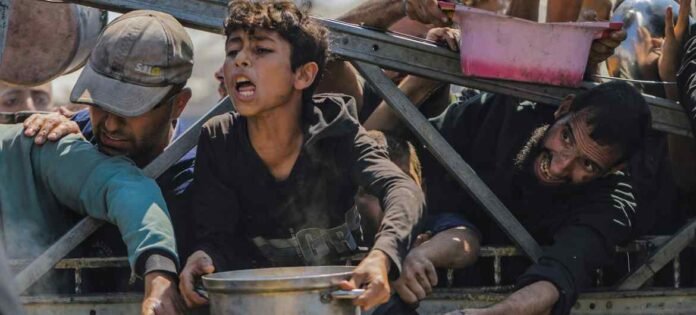The humanitarian situation in the Gaza Strip is worsening rapidly, with hunger, heat, and restricted aid flows pushing the population deeper into crisis, according to the UN Office for the Coordination of Humanitarian Affairs (OCHA).
Food Scarcity at Record Levels
The World Food Programme (WFP) reports that hunger in Gaza has reached its most severe level since the conflict began nearly three years ago. Local health authorities say at least 235 people, including 106 children, have died from malnutrition-related causes as of August 13.
Despite having enough food in the region to sustain all 2.1 million residents for three months, aid agencies say much of it is stuck in limbo. Spoilage and infestation risks are climbing as supplies sit idle, with some shipments nearing expiry.
The WFP says it managed to collect over 1,000 trucks of food at Israeli border crossings last month, but almost all were intercepted by desperate crowds before reaching warehouses. Only 10 trucks successfully delivered their cargo to storage facilities.
Aid Missions Face Daily Barriers
Humanitarian teams are still struggling to move safely inside Gaza. Between August 6 and 12, aid groups attempted 81 missions requiring Israeli coordination. Just 35 went through smoothly, while dozens faced obstructions, denials, or last-minute cancellations. Even approved missions often faced hours-long delays on unsafe and congested roads.
Israel has reduced the number of outright denials, but restrictions and dangerous conditions continue to choke aid delivery.
Rising Heat Adds to the Suffering
On top of food shortages, a blistering heatwave is worsening conditions. With temperatures soaring above 40°C (104°F), dehydration is spiking across the enclave, according to UNRWA, the UN agency for Palestinian refugees.
Clean water remains scarce, and Israel’s five-month ban on shelter materials has left hundreds of thousands of displaced Gazans exposed to the sun with little protection. OCHA estimates nearly every resident has been uprooted at least once since the war began, with many surviving in worn-out makeshift shelters.
Community kitchens are trying to fill the gap, serving about 324,000 meals a day—an increase from two weeks ago but still far below the more than one million daily meals provided back in April.
Conflict Escalates as Aid Falters
Meanwhile, Israeli air strikes and shelling have intensified in Gaza City, Deir al-Balah, and Khan Younis, leaving high numbers of civilian casualties. UN agencies warn that if Israel proceeds with its announced ground operation in Gaza City, families already living in “appalling” conditions could be pushed to collapse.
Nearly 86 percent of Gaza is now under military orders or within militarized zones, leaving little room for aid workers to operate.
The War’s Human Toll
The crisis stems from the October 2022 Hamas-led attacks on Israel that killed about 1,200 people and resulted in around 250 hostages being taken into Gaza. Roughly 50 remain in captivity, some confirmed dead.
Three years later, the enclave faces not just the fallout of conflict but the grinding collapse of its humanitarian lifelines—blocked aid, collapsing infrastructure, and now, punishing summer heat.

